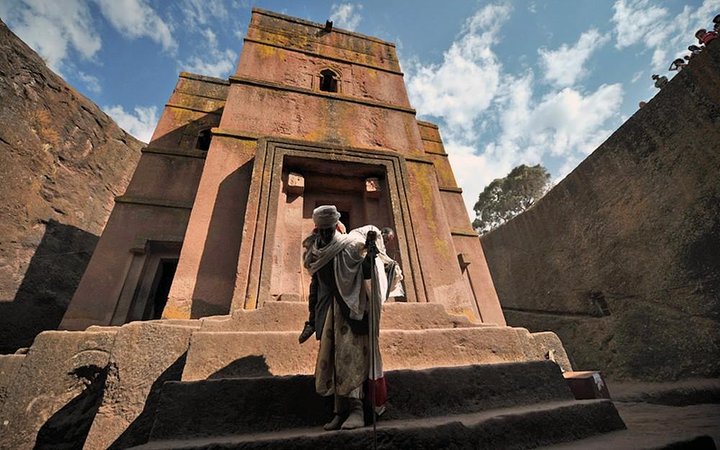Exploring the Timeless Wonders of Lalibela’s Rock-Hewn Churches
When the allure of ancient architecture and spiritual history called, I couldn’t resist the chance to explore Lalibela’s rock-hewn churches. Join me as I delve into this mesmerizing journey through time.
A Journey Through Time: The Rock-Hewn Churches of Lalibela
As a seasoned traveler and urban explorer, I have wandered through the bustling streets of the world’s most vibrant cities, but nothing prepared me for the awe-inspiring experience of visiting the rock-hewn churches of Lalibela. Nestled in the Amhara region of northern Ethiopia, Lalibela is a town that whispers tales of ancient devotion and architectural marvels. The journey began with a comfortable air-conditioned ride, a welcome respite from the Ethiopian sun, as we made our way to the first group of churches.
The moment I set foot on the sacred grounds, I was transported back to the 12th and 13th centuries. The churches, carved directly out of the rock, stood as a testament to the ingenuity and faith of the people who built them. Our professional guide, a fountain of knowledge, led us through the labyrinth of tunnels and trenches that connected these subterranean monoliths. Each church had its own story, its own unique charm. Bete Medhane Alem, believed to be the largest monolithic church in the world, was a sight to behold. Its grandeur was matched only by the spiritual energy that seemed to emanate from its walls.
Discovering Hidden Gems: The Western and Eastern Groups
After a brief respite, we continued our exploration to the second group of rock-hewn churches, known as the Western Group. Here, Bete Giyorgis, the most finely executed and best-preserved church, captured my imagination. Its cross-shaped design and intricate carvings were a marvel of ancient craftsmanship. As I wandered through the site, I couldn’t help but feel a deep connection to the past, as if the stones themselves were whispering secrets of a bygone era.
The journey didn’t end there. The Eastern Group of churches awaited, each with its own story to tell. Bete Amanuel, possibly the former royal chapel, stood with regal elegance. Bete Merkorios, which may have served as a former prison, intrigued me with its mysterious past. Our guide’s insights brought these ancient structures to life, painting vivid pictures of their historical significance and the lives of those who once walked these hallowed halls.
Embracing the Spirit of Lalibela
As the day drew to a close, I found myself reflecting on the profound impact of this journey. Lalibela is more than just a collection of ancient churches; it is a living testament to the enduring spirit of faith and community. The air-conditioned ride back to our starting point provided a moment of quiet contemplation, a chance to absorb the day’s experiences and the stories that had unfolded before me.
For those who seek to immerse themselves in history and culture, Lalibela offers an unparalleled adventure. The combination of professional guides, comfortable transportation, and the breathtaking beauty of the rock-hewn churches creates an experience that is both enlightening and unforgettable. Whether you’re a seasoned traveler or a curious explorer, Lalibela is a destination that promises to captivate your heart and soul.














































